“The New Normal”: How Technology is Changing the Cambridge Experience
DAY 1
May 9, 2018
Dear readers,
This year, when the editors and I sat down to talk about what to write an enterprise story on, we realized just how many of our ideas revolved around technology.
Technology has become ingrained in everyday life, and, consequently, it has become just as prevalent and influential within schools.
After we got to talking, the editors and I realized that there were a number of facets of the high school experience that had been shifted one way or another by technology integration, whether that be a change in social interaction and relationships, career readiness, quality of learning, or anything else.
Because of this, we saw that it would be fitting to write a whole series of stories surrounding the question of how technology has influenced the formation of the modern high school experience, more specifically, here at Cambridge.
We hope these stories serve not only to educate people about technology’s new place in schools, but to draw attention to both its intended and unintended effects.
Thank you,
Greer Spradling
Editor-in-Chief of The Bear Witness
Editor-in-Chief Greer Spradling
Freshman Haley Spradling seen here with tech-based educational sites such as Home Access and Google Classroom. (Staged Photo)
Part 1: A Student’s New “Tech-Typical” School Day
For generations, school existed only within the physical building: the classrooms, hallways, auditoriums.
Kids had homework, but for the most part, school disappeared once they stepped outside the confines of the campus.
Nowadays, with the integration of many forms of technology into education, school can seem ever-present. Apps such as Remind 101, Google Classroom and Home Access Center allow kids to stay connected to school at all times.
For many, the constant presence of school can be overwhelming.
“My teachers stress me out enough,” said freshman Claire Thielens. “I don’t need my phone doing it too.”
Senior Delanee Wilson said technology serves as a constant reminder of grades and assignments. While this can keep her on track, it can also lead to stress.
“You never get a break,” said Wilson. “It keeps reminding you of school.”
Some students also acknowledged that the stress they feel is perhaps un-proportional to the amount warranted, especially when it comes to Home Access Center.
“It provides more stress than it should, especially when teachers don’t put in grades,” said junior Darmon Kahvazadeh. “You stress more than is necessary because you think you’re doing worse than you actually are.”
This anxiety is felt by many other students, as well.
For senior Alex Seymour, a lot of that stress stems from the constant reminders she gets in the form of push notifications on her phone.
Seymour said the notifications can be helpful when they remind her about assignments or tests that may have slipped her mind, but she has to take breaks and remember to step away from it all sometimes.
“Literally, it’s never-ending,” said Seymour. “I just need to put it down.”
Many students habitually check classroom media throughout the day, while some neglect to check them at all.
For the students who make a point to stay on top of classroom media, it can become especially overwhelming, as teachers will often post assignments well after the school day is over.
“I’ve just gotten used to having to check,” said senior Grace Parzych. “It’s something I do subconsciously.”
Parzych said there are seven internet platforms she checks consistently to keep up to date on all of her school work. She also said there are times she will be lying in bed late at night checking all of the websites one last time, just to make sure she didn’t miss anything.
It’s not only students who say technology can be intrusive.
“I think it’s important that we get away from that stuff for a certain amount of time,” said social studies teacher Brad Coulter.
Science teacher Amber Miller said she is also aware of the pressure this constantly-accessible technology can add to students’ lives.
“You’re a kid, so you shouldn’t have to have all these responsibilities,” said Miller. “I think teachers forget that kids do have six other classes.”
Miller also said that, in particular, students’ ability to check their grade on each assignment and compare it to the class average, has both positives and negatives.
“Students need to see how they are in relation to their peers,” said Miller, adding, however, that this can make students increasingly competitive, as well as discourage some of those who don’t match up with class averages.
Freshman Kat Patillo is one of such students who believe that checking her grades so frequently doesn’t actually benefit her.
“It doesn’t motivate me,” said freshman Kat Pattillo. “It just causes stress.”
While this constant connection has its downsides, many students have also acknowledged some important positives to having access to the classroom at all times, such as making learning easier and more personalized.
“I feel like the technology offers a new way to learn about topics and a great way to share information,” said freshman Venn Reddy.
Reddy added that technology makes it easy to instantaneously edit assignments and customize them to your preference.
“Even if you’re away from school, you can turn things in online,” he said.
Some students also felt that the integration of technology gives them more control over their learning, allowing them to be more independent.
“We can rely on ourselves,” said senior Reese Macmillan. “Before a lot of the technology was implemented, you had to be more reliant on teachers.”
Macmillan also said that the online resources make it easier to prepare for tests, and the ability to receive almost immediate feedback online and consistently check his grades keeps him motivated to do his work.
Whether looking at the positives or negatives, it’s impossible to ignore how much technology has become interwoven with education, a fact that leaves many to question whether the added stress is simply something students will have to adapt to.
“I think the tough thing as teachers is our job is to teach you guys most effectively, so it’s hard to lessen the pressure,” said Coulter.
Embracing The Future Classroom: An Approach to Using Technology
OPINION: Our first guest column out of three to come.
Building a technology-based classroom can change the experience for both the student and the teacher. The process does not happen overnight, but it is an experience similar to growing a garden.
You must start small, allow the seeds to sprout, thin out the things that don’t work and nurture what does.
Thankfully, this does not rely on the Georgia weather; it can happen as slowly or as quickly as you want.
Using technology in the classroom not only gives more control to the students, but it also teaches them to be responsible and active citizens of the classroom and beyond.
In my case, teaching with technology has taught me more about myself and my teaching than any other experience.
Whatever the case may be, whether we decide to embrace it or not, technology is our future.
First, trying technology has taught me to be bold and be willing to make mistakes in my classroom.
As a teacher still early in my career, it is difficult at times to show my fallibility to the students, but making mistakes and failing with my students has made me a better teacher.
Every time I try something new, I tell my students. They typically are willing test subjects for whatever I have recently learned in a conference or professional learning.
The most important aspect of teaching in this way is allowing your students to “grade” you. One should ask for feedback and accept it with openness. The kids will be honest, and they will appreciate having a voice.
Second, bringing technology into the classroom has made it a more student-centered place.
The key feature to this is the continual and meaningful feedback that students can get via the online learning platforms.
Students can easily and frequently take a formative assessment using an online quiz platform such as Google Forms, Microsoft Forms, quizzes, etc. These platforms allow students to answer questions at their own pace, see what they missed, (soon after), and then know what areas to study and seek help on.
With this in mind, we learn best from our errors, as studies have shown that human brains learn best through frequent assessment of material and learning from mistakes.
Technology also makes the classroom a more student-centered place during periods of whole-class direct instruction.
An example of this would be the platform Nearpod, which allows teachers to “lecture” more in-depth questions based on the content they are teaching. In addition, teachers can see in real time whether or not the students are grasping the material.
This provides a new medium for teachers of all areas to dive into what students are thinking, along with the chance to clear up any misunderstood material immediately.
Additionally, technology gives students opportunities that they would not otherwise have a shot at doing, such as virtual labs and field trips. These are two opportunities that can become a major part of a more “experience based” learning, as students are able to try and see things that have in the past been too time intensive, costly and potentially hazardous.
Even though these virtual experiences will never replace the real thing, they provide a close substitute to reach students who struggle with connecting to the traditional classroom.
One of the major qualms that I personally had when I started to transform my classroom to use more technology was phones and distractions.
This remains a daily hurdle.
I cannot expect my students to be able to get their work done on problematic school devices without allowing them open access to their phones, so that they may troubleshoot these such problems.
While it does get quite abused frequently, it does mean that I have to give up some control, pick my battles and be aware of what my students are doing as much as possible.
(It means I do not sit down!)
At the same time though, allowing students open access to their phones flips the responsibility of learning to them. If someone really doesn’t want to learn, then they’ll still be on their phone despite the repeated attempts to get on task. No matter the case, it happens with or without technology present.
With this in mind, it is my stance that we’re teaching our students to be responsible young adults, and part of this is allowing them to make the occasional easy (but wrong) choice, and show there are consequences that’ll result out of them.
I see the future classroom as one that embodies a student-driven-approach to learning, as with knowledge being readily available and more accessible than ever before, it is up to the students to learn many things in a more independent and active manner than past generations.
The teacher’s role in all of this becomes no less active or important; perhaps even more vital in the future.
In conclusion, today’s teens need role models that are willing to make mistakes and learn from them on a frequent basis, for it is in failing that we learn to better ourselves and grow.
One of my favorite quotes is “the time comes when the risk it takes to remain tight inside the bud is more painful than the risk it takes to grow.”
The future is changing and we, as educators, are called to grow with it.
Science Teacher Leanne Vaughn teaches Physical Science and Chemistry and is also a member of Fulton County Schools’ Vanguard team.
Opinion and A&E Editor Daniel Jimenez
A new interrogation of collaborative work spaces has begun with in the school.
Part 2: Physical Work Spaces Within the School
A new era of technological integration has begun.
Schools all around the country have started to adopt the trend of using technology to enhance their students’ ability to learn.
For Fulton County schools, in particular, the introduction of one-to-one computers has brought about a great number of adjustments.
“The Surfaces were a really big change,” said freshman Will Jurczak, who first received his tablet in middle school. “They make work and learning in classes much easier than it was before.”
The infrastructure of our school has undergone some big changes as a result of the increased focus on technology.
Perhaps the most visible change at the school is the reinvention of the media center, which became the “Student Center” last year.
The old, traditional library with rows and rows of books is out, and in is the relatively new Student Center, which is better equipped to allow students to use technology in a collaborative manner.
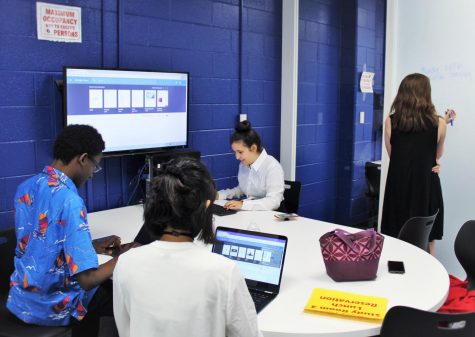
Freshmen Ezi Ononuju, Rhea Sridhar, Emily Arieh, and Emma Dawson are taking full advantage of the workrooms in the Student Center to get work done.
Media in Education and Technology Instructor Laura Morgan said she has seen students use the Student Center more often now, taking advantage of what it has to offer.
“It’s very exciting to see the students take full advantage of all the different changes that the student center underwent,” said Morgan. “I think these changes made it a better place for students to work.”
While there are many factors that have driven students to use the student center more often, none are more apparent than the new collaborative workrooms.
These are five glass study rooms that feature two Recordex portable projectors, large whiteboards and moveable tables and chairs on wheels. These rooms are available to better fulfill students’ academic needs.
When the then-media center underwent renovations in the summer of 2016, around 400-500 books were removed to build these collaborative workrooms. The Student Center now carries around 8,000 books.
Morgan said the electronic resources like the apps on LaunchPad make up for any information from books that are no longer present.
The electronic resources in the school’s workspaces have certainly changed the way students can learn.
Media Paraprofessional Marian Macleod said she believes these new collaborative workrooms have allowed students to learn in a more natural environment.
“The diverse set of ways students can now learn is incredible,” said Macleod. “I think the innovative spaces around the student center have really helped students learn in ways they feel most comfortable.”
As a result of the collaborative work rooms’ rapid growth in popularity, Macleod and Morgan now require students who wish to use them during lunch periods to reserve the space ahead of time. Macleod said this allows the staff in the student center to better monitor the constant flow of students.
These new rooms are just one of the features that have driven students’ interest in the Student Center. Another is the design lab, where students have ample space to collaborate on hands-on projects.
Morgan said she is enthusiastic about letting students work together to enhance their learning experience.
“Studies show that students are more successful when they work with peers, and the Student Center is a perfect place for students to work together at a high level,” said Morgan.
It’s clear that Morgan’s message has resonated with many students.
“It’s very nice to have a place in school where I know that I can finish my work,” said freshman Will Paulus.
The Student Center has even opened the eyes of some underclassman who were used to a traditional library.
“The student center is really unique compared to the library at my middle school,” said freshman Max Brodsky. “It is a very good place to get my work done.
“Everyday at lunch there are a lot of people around, so it must be pretty helpful to students,” Brodsky said.
The Student Center’s features are just some of the innovative changes in the school’s infrastructure that have forever changed the way students can learn in workspaces.
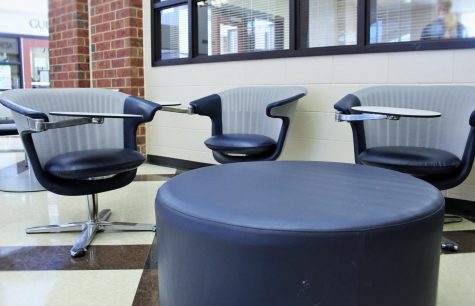
These table-chair hybrids located in front of the school, near the Attendance Office, are quite comfortable for students to get their work done.
Another modification has been the addition of tables and chairs around the school’s hallways.
Assistant Principal Darius Maize said these newly added tables and chairs were incorporated in order to give students additional workspaces.
“With the addition of the tablets, we knew that students would need new areas to use them,” said Maize. “We believe the addition of the tables and chairs has fulfilled that need.”
Sophomore Luke Isler said that these tables and chairs have been a welcomed inclusion to the school.
“I think they were a good addition,” said Isler. “I have used them a few times before as a place to get my work done.”
Technology has forever changed the ways schools across the country teach their students, build their workspaces and redefine educational collaboration.
This is certainly the case at our ever-evolving school.
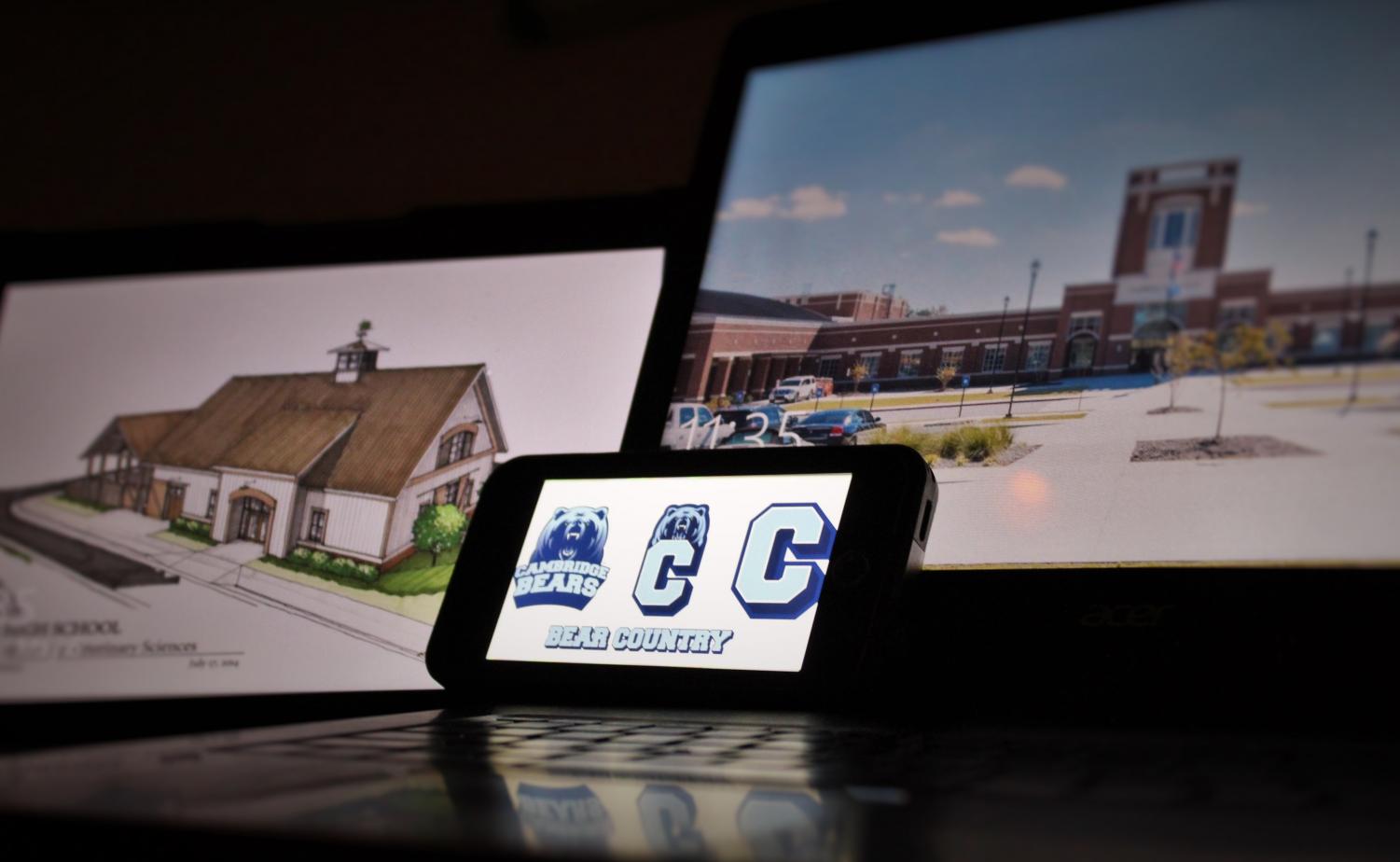
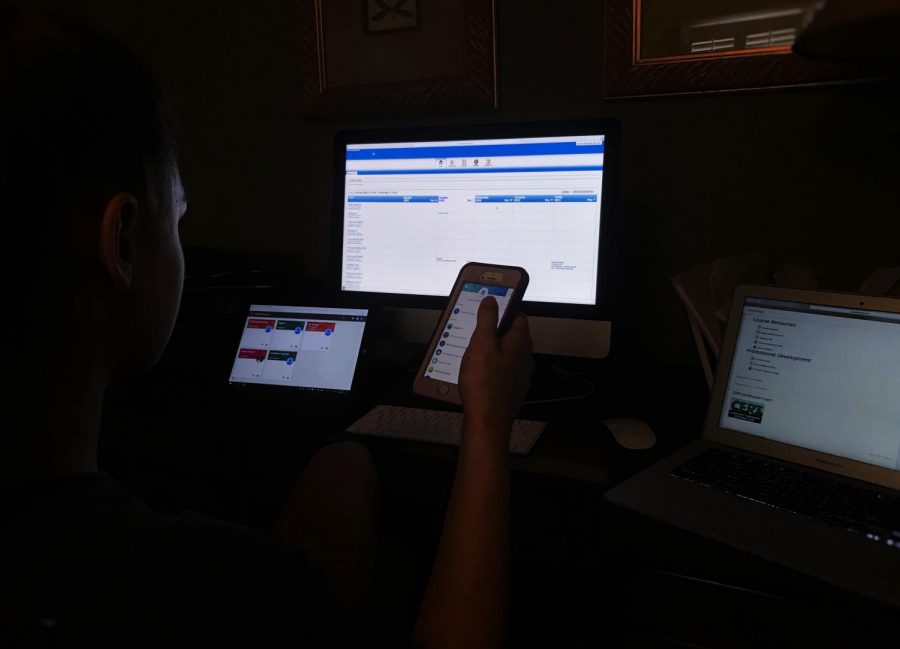
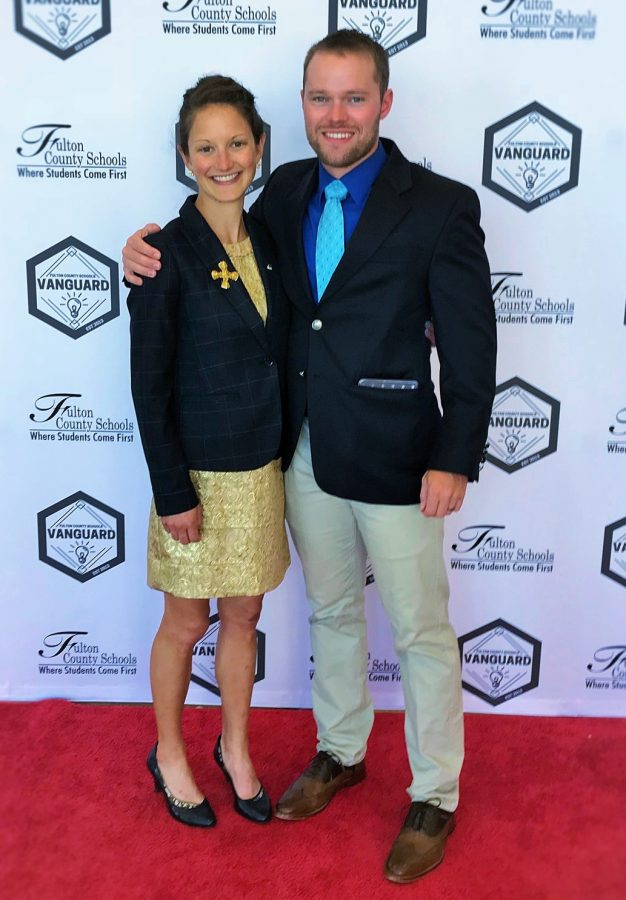
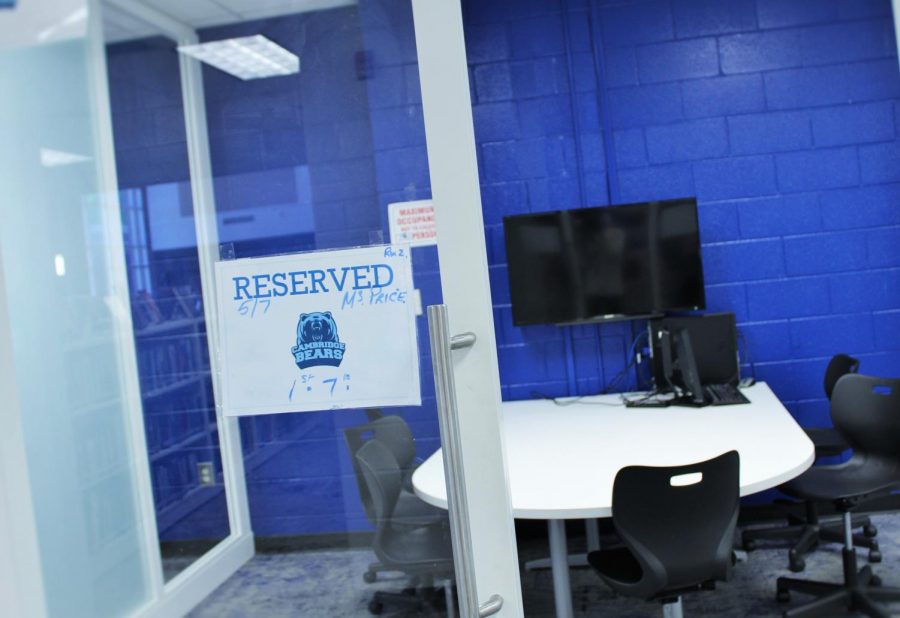
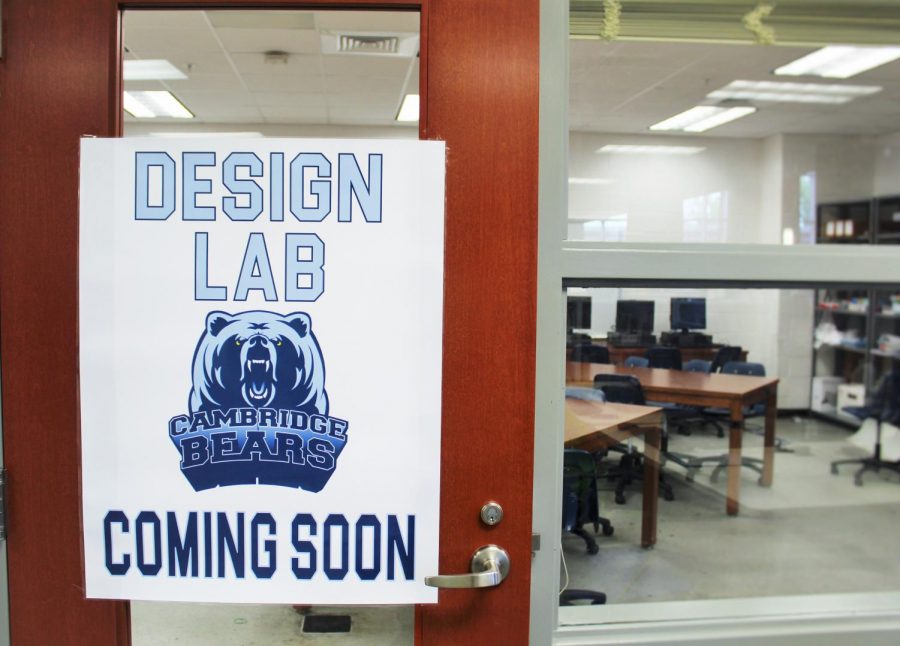
Grace • May 10, 2018 at 12:09 pm
Cool stories.